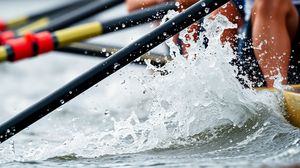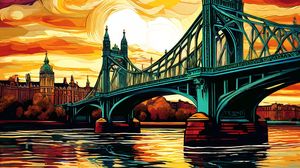
The Oxford and Cambridge Boat Race, known simply as The Boat Race, is one of the oldest sporting events in the world. First held in 1829, it has become a celebrated annual rowing race between the University of Oxford and the University of Cambridge. The race takes place on the River Thames and traditionally starts at Putney, ending at Mortlake, passing through suburbs like Barnes along its course.
This rowing event is considered one of the pinnacles of university competition, attracting large crowds and millions of television viewers worldwide. The race follows the so-called "Championship Course," which is approximately 4.2 miles long. The challenging course's tidal waters make the race exciting and unpredictable, adding to its historic appeal.
One fascinating aspect of The Boat Race is the high level of rivalry between the two teams. This competitive spirit is often compared to other famous sporting rivalries like the Ashes in cricket. The intense preparation and training regimens undertaken by both teams are akin to professional athletes, though all participants are university students.
The race is steeped in tradition, with strict adherence to rules that have not changed much over the decades. For instance, the tradition of tossing the winning cox into the water has been a long-standing practice, adding a humorous touch to the event's conclusion.
Another intriguing fact about The Boat Race is that it enjoys deep-rooted support from alumni of both universities. Former university rowers often return to watch the race, continuing the legacy and encouraging current students. These established support networks have lasted for generations, underlining the heritage of the event.
The Boat Race has also served as a platform for professional rowing careers. Many rowers who have participated in the event have gone on to represent their countries in the Olympics and other prestigious competitions, making it a launchpad for sporting careers.
Despite its formal and traditional roots, the race has adapted over the years. In recent years, both the men's and women's races are held on the same day, ensuring parity and encouraging more inclusive celebration from spectators.

Making the Most of Your Visit:
Try to arrive early to get a good spot along the river. Spaces fill up quickly, especially around Putney Bridge and Barnes Bridge, where the views are unobstructed and the excitement is palpable.
For a vibrant atmosphere, head to one of the riverside pubs. You'll find the air buzzing with anticipation, fans cheering, and plenty of refreshments to keep you going throughout the race.
Be sure to check out the pre-race build-up. There's often a real sense of occasion in the area with events and festivities, including food stalls and live music, setting the mood for the main event.
If you're keen to see the finish up close, aim to position yourself near Chiswick Bridge. This is where the race ends, and you'll witness the cox tossing tradition and the roaring celebrations of the winning team.
Consider taking a walk along the Thames Path to fully appreciate the atmosphere and see different parts of the race. It's a lovely way to soak up the local scenery while following the progress of the race.

Visiting Times & Costs:
The Oxford and Cambridge Boat Race is open to the public, and it is a free event. Spectators can gather along the River Thames where the race takes place, particularly at popular spots such as Putney and Barnes, to watch the race. There is no fee to view the race from these areas.
The Boat Race occurs annually, usually taking place on a Sunday in late March or early April. The exact date varies each year, so it is advisable to check the current year's schedule closer to the time.
Accessibility can vary depending on the location along the riverbank. Some parts of the riverside may have limited access for those with mobility challenges, particularly if they involve uneven ground or narrow paths. However, certain areas near bridges and public spaces may offer better accessibility options.
Public transport services are typically increased to accommodate spectators, and there are often additional facilities set up for the event. It is recommended to plan your visit accordingly to ensure you find a suitable spot and have a comfortable experience.

Address & Map:

Nearby:























